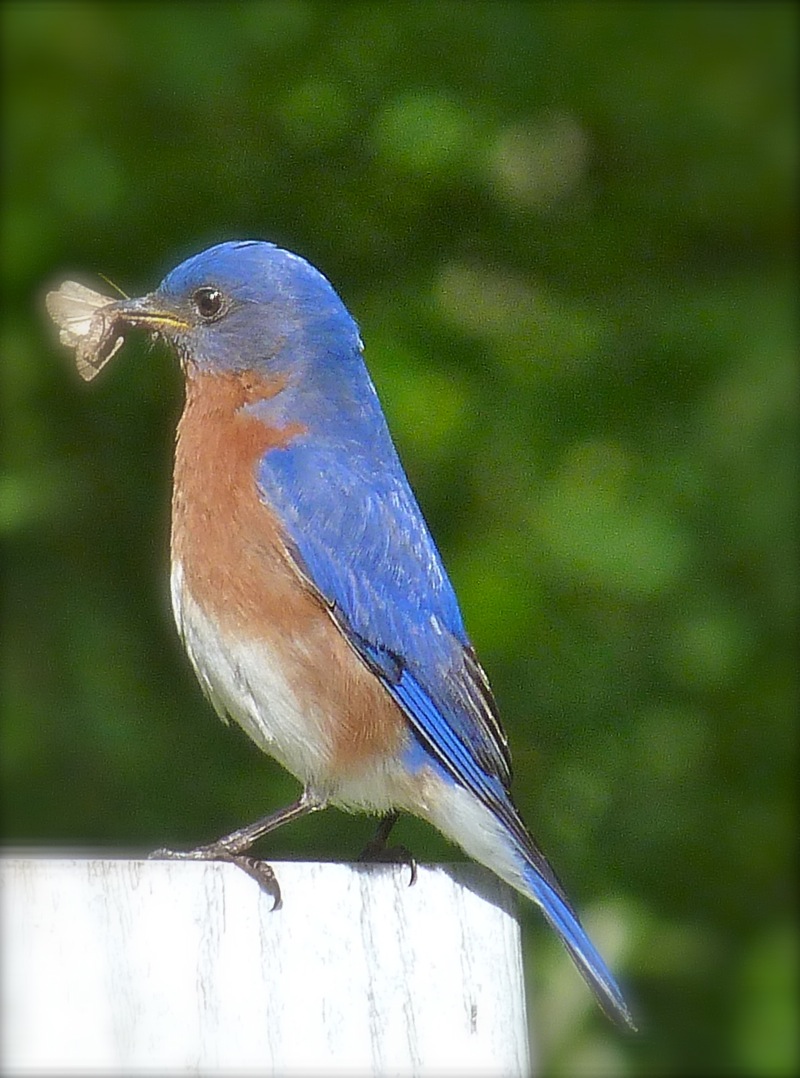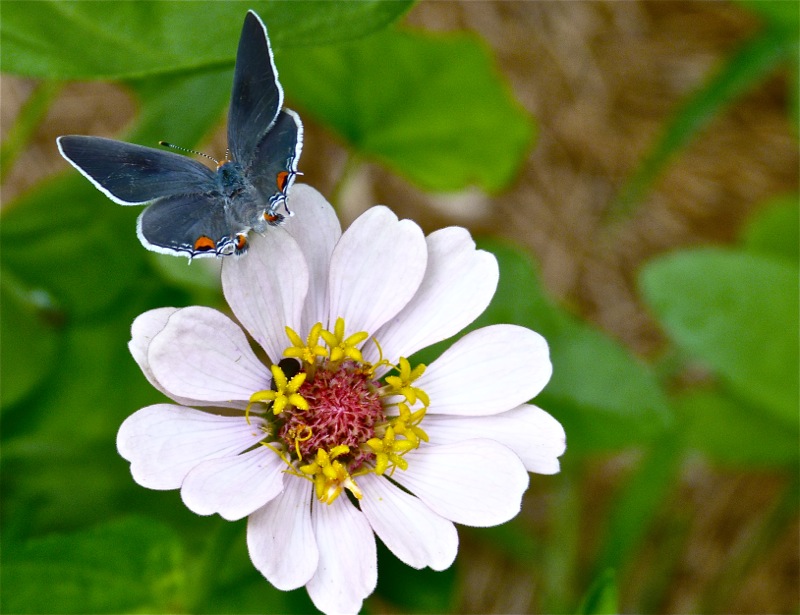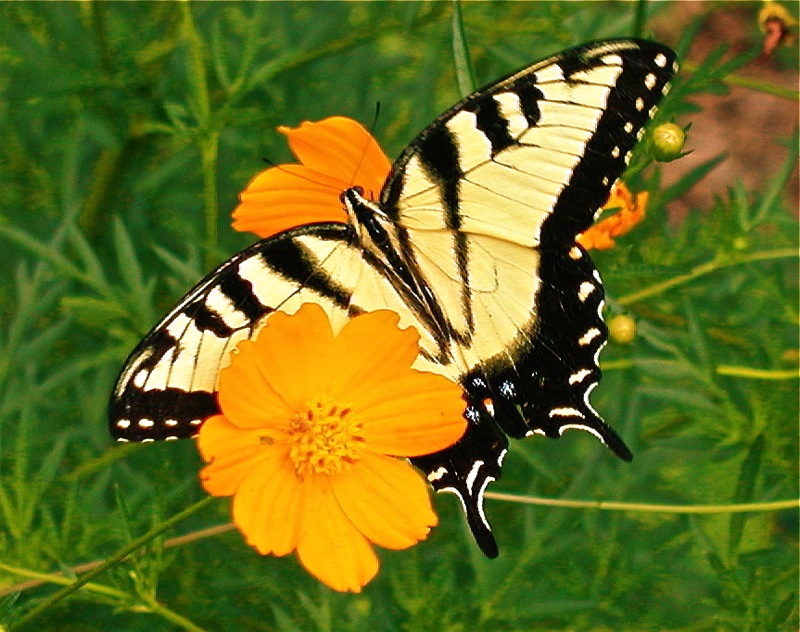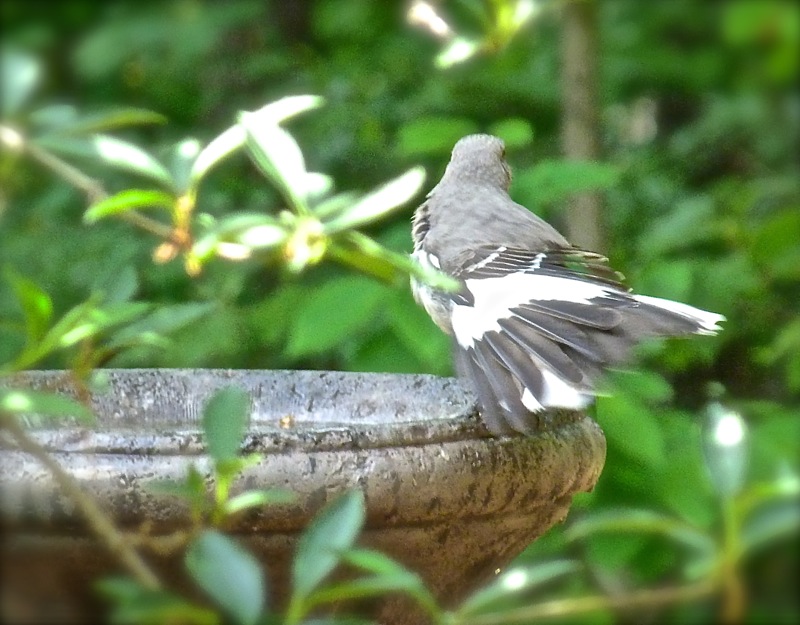August in Alabama
 Saturday, August 23, 2014 at 5:00PM
Saturday, August 23, 2014 at 5:00PM The sky is so bright the blue pops like cerulean paint splashed against a white wall. Hot air blankets the earth, moist and thick. We all shrug at the soaring temperature and humidity. It is August in Alabama, and what do you expect? I watch clouds form in the afternoon and evaluate their potential for rain.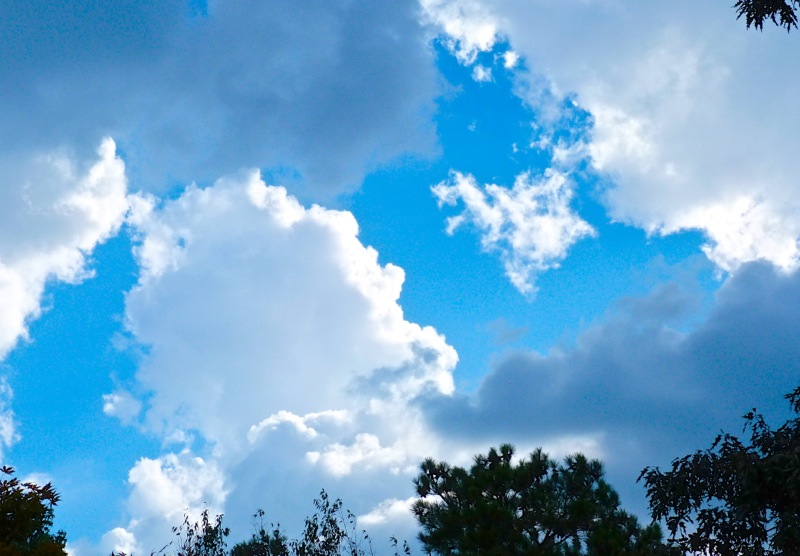 I am thankful we have not had a drought this summer, but even a day or two of high nineties heat can cause plants, as well as people, to wilt.
I am thankful we have not had a drought this summer, but even a day or two of high nineties heat can cause plants, as well as people, to wilt.
The clouds thunder and rain briefly pours over us. There is temporary refreshment, but when the sun comes out again, steam rises from the drive's hot pavement and only increases the sauna-like conditions.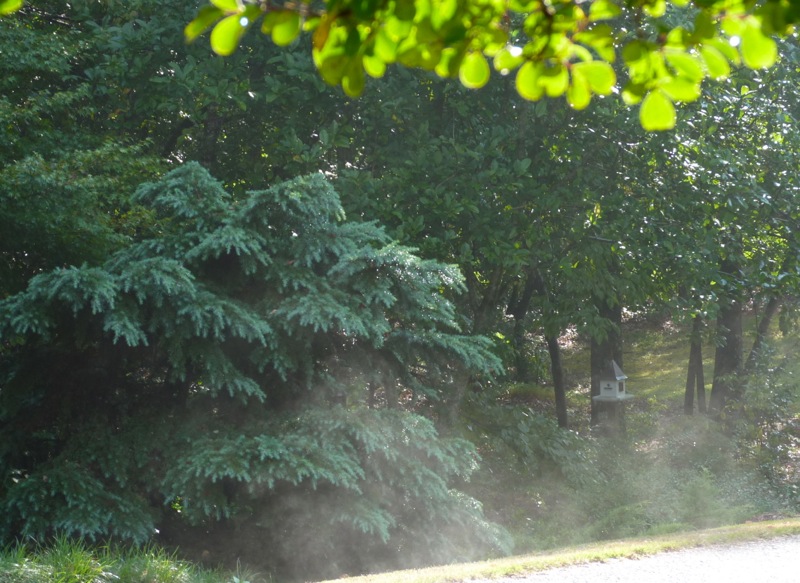 Deodar cedar 'Feelin' Blue' grows along the edge of the drive that overlooks the woodland garden. Steam rises from the road after a brief summer shower.But summer will soon begin to fade, and within a month the weather will be changing. Meanwhile, a quick tour of the garden:
Deodar cedar 'Feelin' Blue' grows along the edge of the drive that overlooks the woodland garden. Steam rises from the road after a brief summer shower.But summer will soon begin to fade, and within a month the weather will be changing. Meanwhile, a quick tour of the garden:
The succulents take the heat gracefully. Not many plants will survive the summer in concrete pots, but these do well.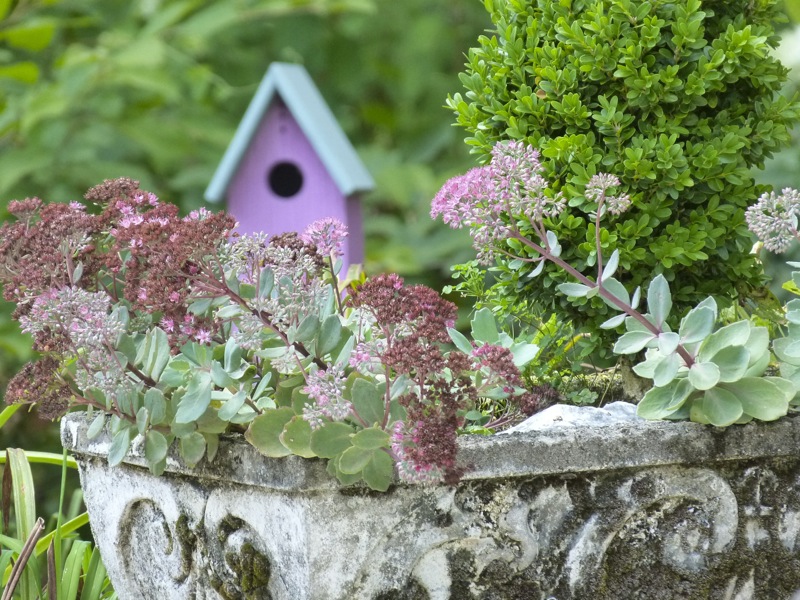 I initially planted Sedum 'Vera Johnson' in the ground, where it languished for several years. After I transplanted it to this old concrete pot, it began to flourish.
I initially planted Sedum 'Vera Johnson' in the ground, where it languished for several years. After I transplanted it to this old concrete pot, it began to flourish.
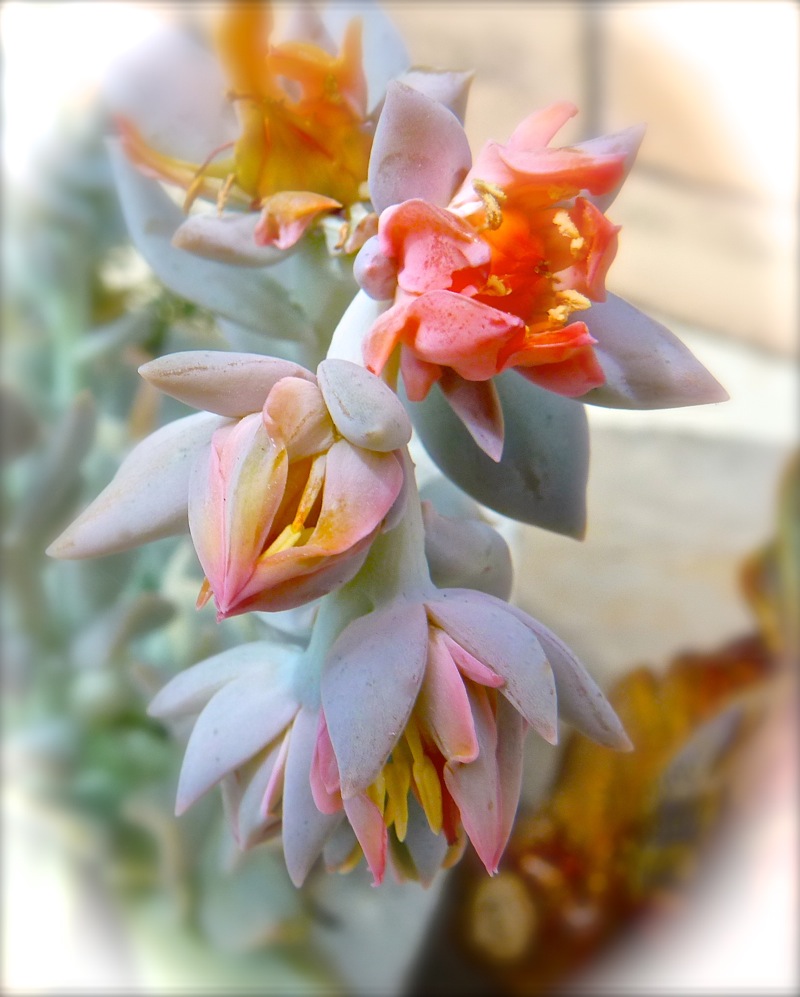 Echeveria runyonii 'Topsy Turvy' is another succulent that is blooming this summer. It is growing in a hypertufa pot in full sun.
Echeveria runyonii 'Topsy Turvy' is another succulent that is blooming this summer. It is growing in a hypertufa pot in full sun.
Hydrangea 'Limelight' continues to bloom, despite the heat. It is in partial sun, and I do have to water it whenever we don't get rain for a few days. I can see the blooms from the kitchen window. They brighten my day, for the greenish-white panicles truly glow amidst the greenery of the garden.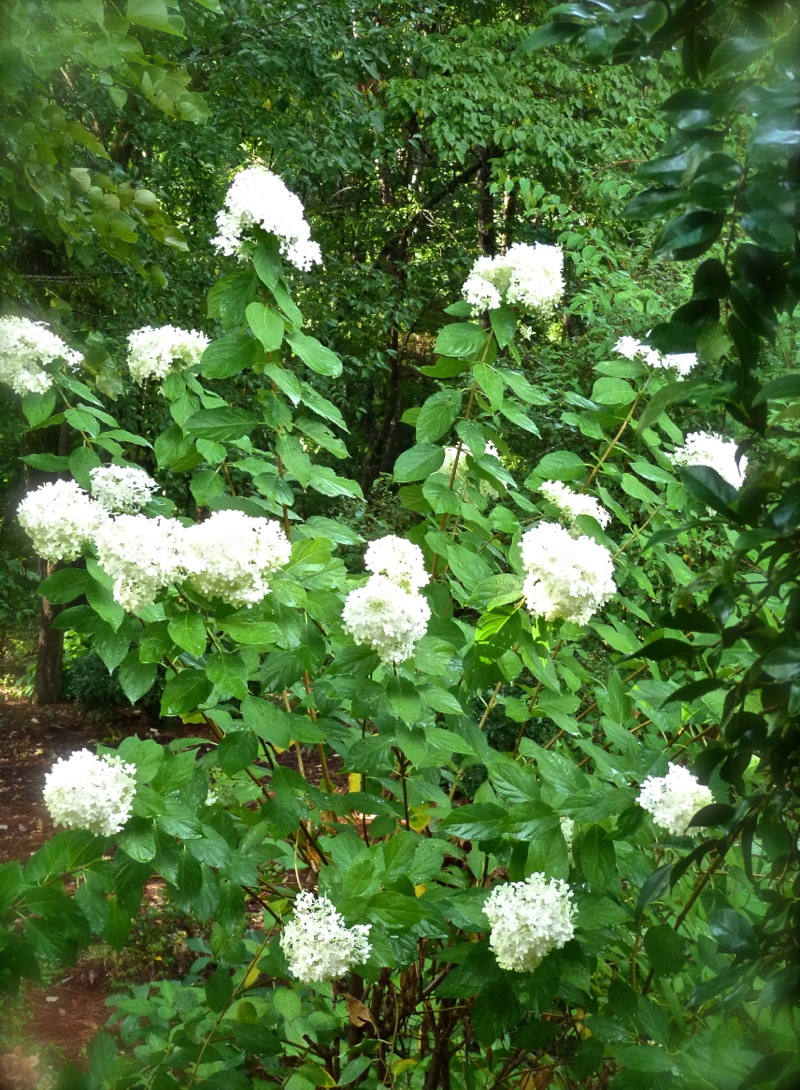
My watering can is put to good use this time of year! Arborvitae fern (Selaginella braunii) and wild violets surround my old watering can.
Arborvitae fern (Selaginella braunii) and wild violets surround my old watering can.
Some more plants around the August garden:Clockwise from top left: Coral colored Impatiens is a good companion to golden Creeping Jenny (Lysimachia nummularia 'Aurea'); Yucca filamentosa 'Bright Edge', also called Adam's Needle; Variegated Liriope; Coneflower is spent, but the seeds remain for the birds.
We are harvesting lots of apples from our two apple trees. One is a Golden Delicious, and the other is Red Delicious. Neither are recommended for our Deep South location. I did not do my research before I purchased them! They are also prone to apple-cedar rust, and we have many cedar trees on our property. These trees should be doomed, but they don't seem to know it.

August is hummingbird season, as they travel through our area on their way to Central America. They will fly five hundred miles, non-stop on their southern migration across the Gulf of Mexico. I love these amazing little birds with such feisty personalities. I spent over an hour in the sweltering heat, trying to get a good shot of one. I had little success, for their aerobatics are too fast for my reflexes. I finally managed this out of focus image and decided that would have to do!
I had no trouble at all getting a photo of this ornamental metal bird:
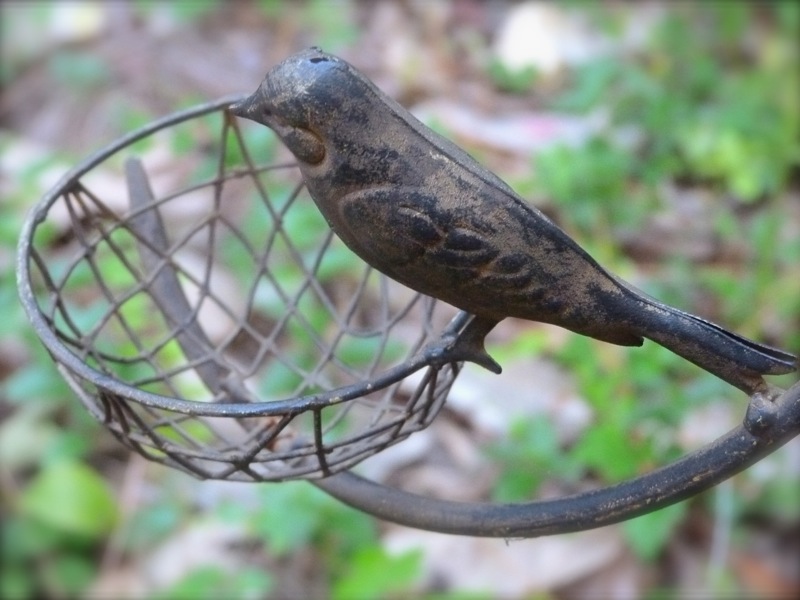
Finally, the most amazing photo that got away... I was walking through the arbor garden and noticed black-capped chickadees flying around the iron chandelier that hangs over a small sitting area. The chandelier holds six candles, and a chickadee was perched on each candle, pecking furiously away. The chandelier was holding six chickadees, and wax was going in all directions! I don't know what they liked about the candles. Perhaps the wax was similar to suet. By the time I got back with my camera, the chickadees were gone and so were all the candles. Here is a photo of my iron chandelier, with new candles:
and here is a black-capped chickadee, a public domain photo, not mine: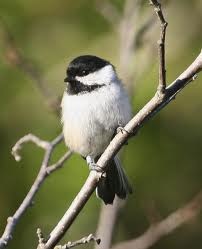
So the moral to that story is to always keep a camera with you. Don't we all know that, and does anyone actually do it? Happy August to you. Soon it will be September!
 black-capped chickadee,
black-capped chickadee,  hummingbird,
hummingbird,  sedums,
sedums,  summer,
summer,  summer flowers,
summer flowers,  summer garden in
summer garden in  summer
summer 